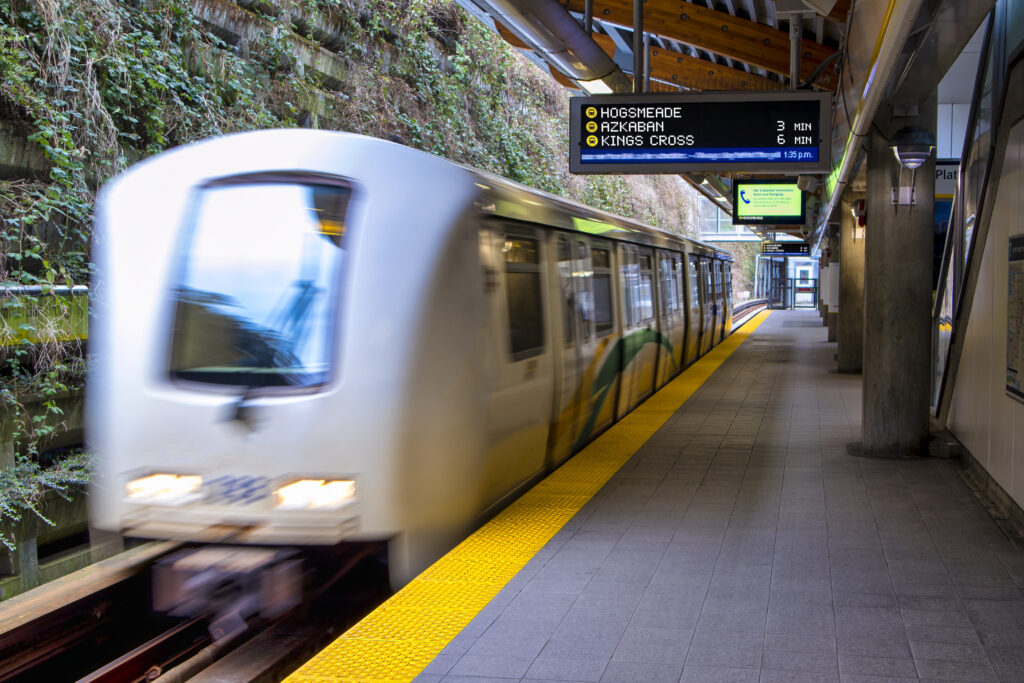Upgrading operational rail systems is like doing open heart surgery. You need to keep the patent alive while doing the transplant. An additional constraint is that much of the critical work has to be done during non-revenue hours, so from 2 AM to 4 AM in the morning. Have you ever been on a rail system during this time? It is very busy with maintenance and upgrade work all over the system.
The construction industry has seen one of the lowest productivity growths of any industry in the past 80 years. Manufacturing and retail have had an 8x increase of in gross value-added per hour worked, with construction remaining the same over the past 80 years.
Innovation can really make an impact on operational systems upgrade projects in hugely meaningful ways. The fusion of manufacturing learning techniques, product development techniques, systems engineering techniques, process development, organizational change management, and high performance team building were all important contributors.
It also required expertise from the SysEne team to lead and fuse all this together in a way that the Owner and Operating Company could partner with, learn from, and apply to future programs and projects.
- Increasing Non-Revenue Rail System Construction During Operations: Many rail systems upgrades have to be done in a short 2 hour non-revenue window in the middle of the night.
- Upgrading Operational Rail Systems: Rail system upgrade without compromising service availability or productivity.
The Project Need
The Owner had to upgrade 33 stations with new displays, public address speakers, and CCTV cameras, for a total of 3000 devices. Much of this required work in the station along the rail systems, which then limited work to the 2 hour non-revenue work window, which was often cut down to 90 minutes of productive work including setup and takedown. The project was faced with the daunting task of trying to get all the work done in a 2 year timeframe given all the constraints. As most of the factors for the construction companies were beyond their control, for example maintenance needs or system disruptions (like a snowstorm) could disturb the work plans, the quotes for the work were coming in at $30M + over the anticipated budget.
The Solution
The approach SysEne recommended was to consider the 33 stations as a “manufacturing line” where we would apply learning curve effects to increase productivity as we could develop improved safe work methods that could increase productivity.
This required designing the overall approach as a flexible and learning approach in partnership with the construction companies and the operating company staff. This required the project to primarily be a reimbursable time and materials contract – on the order of $50M, which is very much non-typical in industry.
SysEne then led the development of productivity development to increase the amount of work that could be done safely at night to include work that could be done during non-peak revenue hours using hoarding techniques and construction work method development.
Most of the innovation ideas came from the contractors and subcontractors, with some also coming from the operating company. The first stations were costing well over $2M of installation costs, and this was steadily reduced throughout the project to about $1M per station. The overall savings using this approach was approximately $25M for the full scope of the displays, speakers and cameras, and $15M attributed to the display project.
SysEne led the development of a high-performance team of three design consultants (one for each system) and 2 general contractors to deliver the station implementation scope. The entire design and implementation process had to be integrated and optimized for productivity and change management. As the stations are all old, the design had to be constantly changed to adapt to what was found in the field. It is like renovating your old house.
As you open up walls and ceilings to mount your devices, you find all kinds of structures and differences of what is really there, and then having to change the design quickly. Both day and night crews were present, on up to 6 stations concurrently, and the information, change, and decision management required a fast, accurate process that could enable a single source of truth, configuration management, and ease of verification.
One of the contractors recommended AutoDesk’s Plangrid for implementation, and after review, the project adopted this for the Owner, Operating Company, and all consultants, contractors, and subcontractors, so all the project data could be managed in an integrated and efficient way.
 Display close to train dynamic envelope
Display close to train dynamic envelope
Incredible Results
We employed an innovative approach, high quality, on-time, on-budget, and with minimal impact.
From a construction and systems implementation perspective, this project delivered amazing results. The quality was far higher than similar projects, and the productivity gains had a huge impact to the project schedule and budget.
It also minimized impact on the Customer, and enabled the Operations company not to have to use up so many precious non-revenue slots and resources for our project, and therefore enable other critical work.
The positive sentiment around this project has been fantastic, and the subject of many enjoyable stories. SysEne was honored to be entrusted with the stewardship of this project, and we are very proud of the outcome.
Related Insights
Check out some of the other tech innovation taking place in
the public transit space.